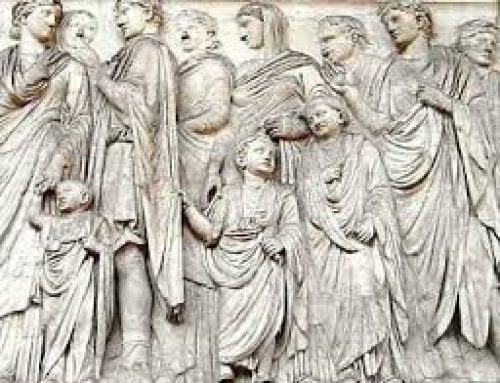
Proof for the area of a circle: Divide a circle up into sections like an orange
Euclid’s proof
We know it’s true that A=πr-squared is the area of a circle, but how can we prove that this formula is always true for every possible circle? Here’s how Euclid did it.
Who was Euclid?
Area of a circle
More math articles
African science and math
All our Africa articles
Divide a circle into sections
Start by dividing a circle into sixteen sections like an orange. We know that together they add up to the area of the whole circle.
Line the sections up like teeth
Now take all the green sections and line them up next to each other like the bottom teeth of some wild animal. On top of them, line up all the orange pieces like the top teeth of the animal. Then fit the sections together as if the animal had closed his mouth.

Fitting the sections of the circle together to approximate a rectangle
Is it a rectangle?
All the teeth together look almost like a rectangle. The short side of this rectangle is the radius of the circle. The long side of the rectangle is half of the circumference of the circle, or 2πr. What if we multiply them together to get the area of the rectangle? Then we get r (πr) or πr-squared – the area of a circle.
What is circumference?
Proof for a circle’s circumference
Area of a rectangle
If we cut our circle into smaller sections, our rectangle will be straighter, but this is enough to see what it would be like.
More about the area of a circle
And more about circles
More about spheres
More about Geometry
Bibliography and further reading about circles:




